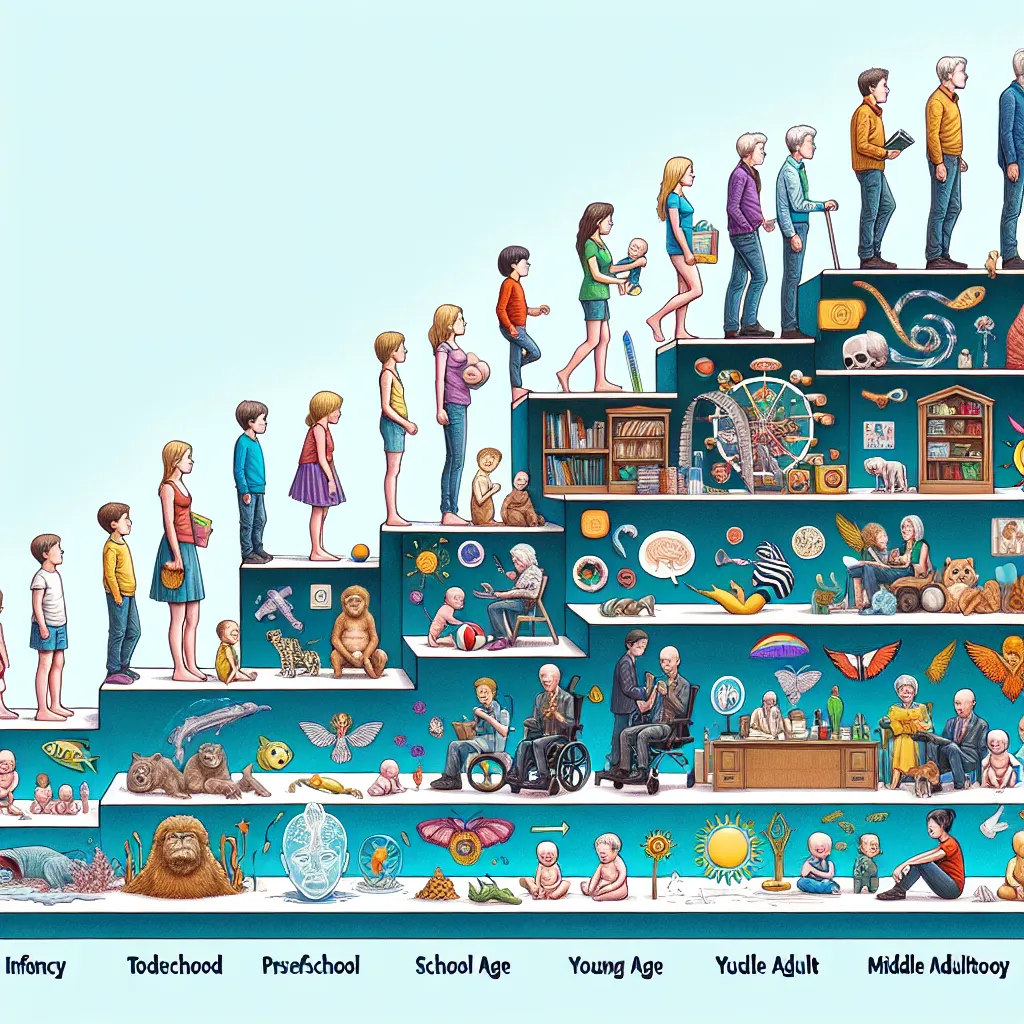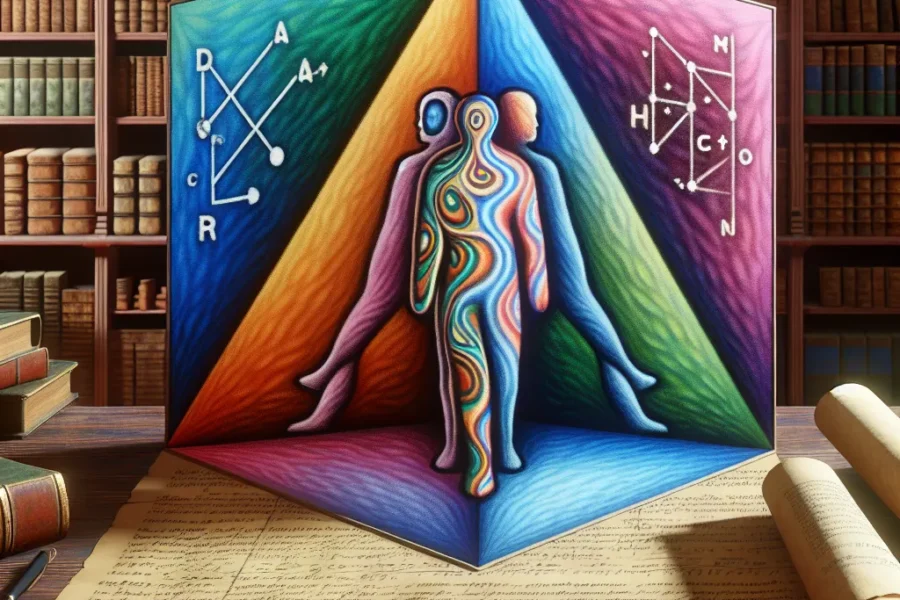Erik Erikson, a prominent psychoanalyst and developmental psychologist, made significant contributions to our understanding of human development through his theory of the psychosocial stages of life. Erikson’s model comprises eight distinct stages, each characterized by a central conflict that individuals must navigate and resolve to develop healthy personalities and skills. This comprehensive look at the stages of life according to Erikson will delve into the intricacies of his theory, empowering readers with insights into their own life journey and the psychological milestones at each juncture.
The First Stage: Trust vs. Mistrust (Birth to 18 Months)
Erikson’s first stage of life occurs from birth until about 18 months of age and is focused on developing a sense of trust. Newborns are utterly dependent on their caregivers, and their primary concern is whether their needs will be met. A sense of trust is fostered when caregivers provide consistent, reliable care, affection, and nurturance, leading to feelings of safety and security. Conversely, if a child experiences neglect or inconsistent caregiving, they may develop mistrust, fearing the world around them. Successfully navigating this stage results in the virtue of hope.
The Second Stage: Autonomy vs. Shame and Doubt (18 Months to 3 Years)
As toddlers begin to explore the world and develop a sense of personal control, they encounter the second stage: autonomy versus shame and doubt. Erikson believed that during this stage, children learn to assert their independence by making choices and exercising their will. Encouraging self-sufficiency and allowing children to try new things facilitates a sense of autonomy. However, if parents are overly protective or critical, a child may begin to doubt their abilities and feel a sense of shame. Mastery of this stage leads to the virtue of willpower.
The Third Stage: Initiative vs. Guilt (3 to 5 Years)
During the preschool years, children enter the third stage, where they are faced with the challenge of initiative versus guilt. Children are eager to undertake new activities, set goals, and lead play scenarios. When parents support their child’s sense of initiative and provide opportunities for independent play, children learn to set objectives and act in ways that are socially responsible. If discouraged or punished for their efforts, children may develop a sense of guilt about their desires and abilities. Successfully working through this stage results in the virtue of purpose.
The Fourth Stage: Industry vs. Inferiority (5 to 12 Years)
Erikson’s fourth stage occurs during the school-age years when children strive for industry versus inferiority. The focus here is on competence and the ability to complete tasks. Children are now immersed in learning new skills, and when they receive praise and recognition from adults and peers, they develop a sense of industry and self-confidence. On the contrary, if children feel that they cannot measure up to expectations, they may feel inferior and doubt their abilities. A successful resolution leads to the virtue of competence.
The Fifth Stage: Identity vs. Role Confusion (12 to 18 Years)
Adolescence ushers in the fifth stage of Erikson’s model, where the central conflict is between identity and role confusion. Teenagers are tasked with forging a stable sense of self and understanding their place in society. They experiment with different roles, values, and beliefs, striving to form a coherent identity. Supportive environments and freedom to explore foster a strong sense of identity, while a lack of affirmation might result in confusion about one’s purpose. Successfully navigating this stage results in the virtue of fidelity.
The Sixth Stage: Intimacy vs. Isolation (Young Adulthood)
As individuals move into young adulthood, they encounter the sixth stage of intimacy versus isolation. Erikson believed that a well-formed identity set the stage for intimate relationships. The ability to form meaningful, close relationships with others defines this stage. If young adults have difficulty establishing intimacy, they may feel isolated and lonely, potentially stunting their emotional development. Successful resolution of this stage leads to the virtue of love.
The Seventh Stage: Generativity vs. Stagnation (Middle Adulthood)
During middle adulthood, the seventh stage, generativity versus stagnation, becomes the focus. Individuals look beyond themselves to contribute to the next generation, often through parenting, creativity, and work. The ability to care for others and contribute to society represents generativity. If individuals are unable to contribute meaningfully, they may experience stagnation, feeling disconnected from the community and unproductive. Mastery of this stage results in the virtue of care.
The Eighth Stage: Ego Integrity vs. Despair (Late Adulthood)
The final stage of Erikson’s life cycle theory is ego integrity versus despair, which occurs in late adulthood. It’s a time of reflection, where individuals look back on their lives with a sense of fulfillment or regret. Ego integrity means coming to terms with one’s life and accepting it as it was, leading to wisdom. However, if older adults view their lives as unproductive or as a series of missed opportunities, they may fall into despair. Successfully resolving this conflict requires achieving a sense of wisdom.
Erikson’s stages of life theory greatly influences our understanding of human development. His insights provide a valuable framework for recognizing and confronting the psychosocial challenges that individuals face throughout their lives. From the trust established in infancy to the reflection and acceptance of old age, Erikson’s model outlines a series of virtues that one can aspire to achieve for healthy development.
As individuals progress through each stage, the skills and experiences they gain form the foundation for the next phase of life. Erikson’s emphasis on the social and cultural environment underscores the importance of a supportive context for fostering growth throughout one’s life. His theory recognizes the complexity of human development, with each stage building upon the preceding ones in a lifelong process of personal and psychological growth.
In conclusion, Erik Erikson’s stages of life give us a comprehensive roadmap for understanding the challenges that shape personal development from infancy to old age. By analyzing these stages, people can gain insights into their own lives and identify areas where they might seek growth or reassessment. Additionally, Erikson’s theory provides a useful framework for educators, therapists, and caregivers to support individuals as they navigate the various stages and transitions throughout life.
As humans, understanding these stages helps us to reflect on our journey and to strive for a sense of balance and fulfillment in our personal and social lives. Erikson’s work reminds us that while growth can be complex, each stage offers unique opportunities for learning and self-discovery. By embracing both the struggles and the triumphs inherent in each stage, individuals can work towards realizing their full potential, achieving a sense of coherence and integrity in their lives.



Leave a Comment